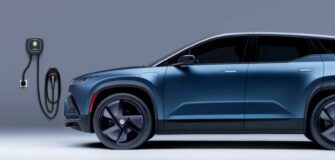Exploring the Advent of 3D-Printed Cars

In the realm of automotive innovation, a groundbreaking technology is poised to revolutionize the way we think about vehicle manufacturing: 3D printing. While it may sound like a concept straight out of science fiction, 3D-printed cars are becoming a reality, promising to reshape the future of transportation, design, and sustainability. Let’s take a closer look at this exciting frontier and the potential it holds for the automotive industry.
1. The Rise of Additive Manufacturing: Building Cars Layer by Layer:
Additive manufacturing, commonly known as 3D printing, has steadily gained traction in various industries, and the automotive sector is no exception. This technology involves creating three-dimensional objects by layering materials, such as plastics, metals, or composites, one thin cross-section at a time. With 3D printing, vehicles can be produced with greater precision and customization, challenging the traditional assembly line approach.
2. Customization Unleashed: Tailoring Vehicles to Individual Tastes:
One of the most enticing aspects of 3D-printed cars is the unparalleled level of customization they offer. Imagine being able to design your car’s body shape, interior features, and even mechanical components according to your preferences. This technology opens the door to a world where every car can be a unique expression of its owner’s personality, making mass customization a reality.
3. Lightweight and Strong: Redefining Material Efficiency:
3D printing allows for the creation of intricate geometries that are difficult to achieve through conventional manufacturing methods. This opens the door to designing lightweight yet incredibly strong components. By optimizing designs for strength where needed and reducing material waste, 3D-printed cars have the potential to be more fuel-efficient and environmentally friendly.
4. Rapid Prototyping: Accelerating Design and Development:
The traditional automotive design process involves creating prototypes, testing them, and iterating based on the results. This iterative cycle can be time-consuming and costly. 3D printing offers a game-changing advantage in this area—rapid prototyping. Designers and engineers can quickly create and test various components and systems, significantly speeding up the development process and allowing for more efficient innovation.
5. Sustainability Milestone: Reduced Waste and Energy Consumption:
As the world places increasing emphasis on sustainability, 3D printing presents itself as a sustainable alternative in vehicle manufacturing. Unlike traditional subtractive manufacturing methods that involve cutting away excess material, 3D printing is an additive process that generates minimal waste. Moreover, localized production through 3D printing could reduce the carbon footprint associated with shipping and distribution.
6. Localized Production: Shaping the Future of Car Manufacturing:
The concept of localized manufacturing is gaining traction in various industries, and 3D-printed cars align perfectly with this trend. Rather than relying on centralized assembly plants, vehicles could be manufactured on-site or close to the point of use. This decentralized approach has the potential to disrupt the entire supply chain and make production more responsive to regional demands.
7. Overcoming Challenges: Regulation, Scale, and Materials:
While the prospects of 3D-printed cars are exciting, there are challenges that need to be addressed. Regulatory hurdles, such as safety certifications and compliance with existing automotive standards, need to be navigated. Additionally, scaling up 3D printing for mass production and finding suitable materials that meet performance requirements are ongoing areas of research and development.
In conclusion, 3D printing is ushering in a new era of automotive innovation, offering unprecedented customization, sustainability, and design possibilities. While the technology is still in its infancy, the progress made so far points to a future where 3D-printed cars could transform the way we manufacture, drive, and interact with our vehicles. As researchers, engineers, and enthusiasts continue to push the boundaries of this technology, we’re on the brink of a remarkable journey into uncharted horizons of automotive evolution.









